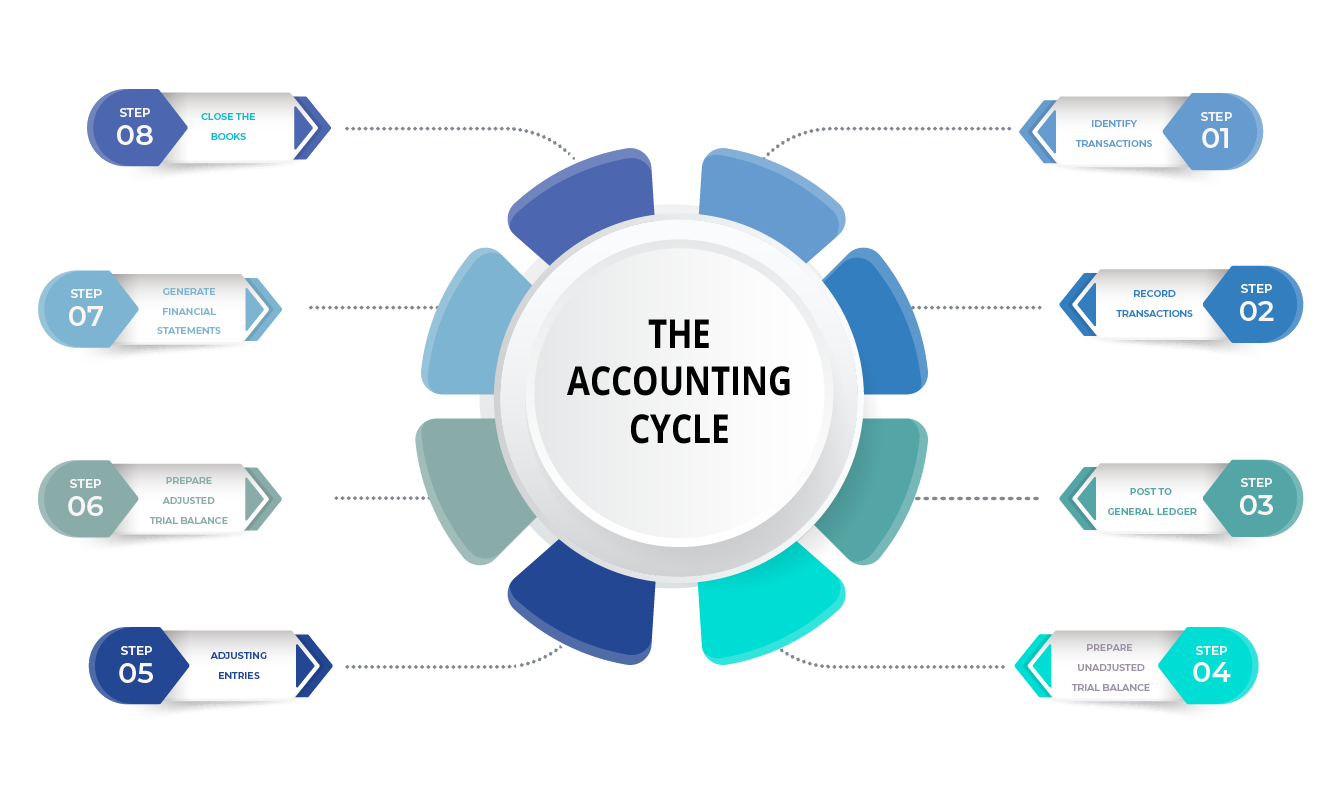The accounting cycle serves as the backbone of an organization’s financial record-keeping and reporting. It encompasses a series of sequential steps designed to capture, analyze, and communicate the financial information of a business. We will explore the importance of the accounting cycle and provide an overview of the eight essential steps involved, along with an explanation of each step’s significance.
The accounting cycle serves as a systematic and standardized process that ensures accurate and reliable financial reporting. Its primary significance lies in:
- Financial Accuracy: By following a structured cycle, businesses can minimize errors and discrepancies, ensuring the accuracy and integrity of their financial statements.
- Regulatory Compliance: The accounting cycle adheres to generally accepted accounting principles (GAAP) and ensures compliance with relevant financial reporting standards, regulations, and tax requirements.
- Decision-Making Support: Reliable financial information derived from the accounting cycle provides crucial insights for strategic decision-making, budgeting, forecasting, and performance evaluation.
Step 1 Indentifying Transactions
Source documents, such as invoices, receipts, and bank statements, are collected and analyzed. This step ensures that all financial transactions are properly recorded and supported by valid documentation.
Step 2 Recording Transactions in the General Journal
Transactions are recorded in the general journal using the double-entry bookkeeping system. Debits and credits are assigned to appropriate accounts to maintain the fundamental accounting equation (Assets = Liabilities + Equity).
Step 3 Posting to the General Ledger
Entries from the general journal are transferred to the general ledger, which comprises individual accounts for assets, liabilities, equity, revenue, and expenses. This step organizes financial data and provides a comprehensive view of account balances.
Step 4 Preparing an Unadjusted Trial Balance
An unadjusted trial balance is prepared by listing all general ledger account balances. It ensures that debits and credits are equal and serves as a preliminary check for any errors before adjustments are made.
Step 5 Making Adjusting Entries
Adjusting entries are made to reflect accruals, deferrals, depreciation, and other necessary adjustments. These entries align the financial statements with the accrual accounting principle and ensure accurate reporting of revenue and expenses.
Step 6 Preparing an Adjusted Trial Balance
An adjusted trial balance is prepared after the adjusting entries are made. It verifies the equality of debits and credits and provides a snapshot of account balances after adjustments.
Step 7 Generating Financial Statements
Financial statements, including the income statement, balance sheet, and statement of cash flows, are prepared using the adjusted trial balance. These statements provide a comprehensive view of a business’s financial position, performance, and cash flow.
Step 8 Closing the Books
Temporary accounts, such as revenue, expenses, and dividends, are closed by transferring their balances to the retained earnings account. This step prepares the accounts for the next accounting period and resets the balances to zero.
The accounting cycle is a structured and essential process that guides businesses in accurately recording, analyzing, and reporting their financial information. By following the eight steps of the accounting cycle, businesses can maintain financial accuracy, comply with regulations, and make informed decisions based on reliable financial data. Understanding the significance of each step empowers businesses to establish a robust financial management system, enhance transparency, and navigate the path to financial clarity.



